“Digi Fab Park” Exhibition produced by FabLab KandaNishikicho
A special exhibition, planned and produced by FabLab KandaNishikicho(Tokyo, JAPAN), is being held at the Children’s Museum in Nagano Prefecture.
The name of the exhibition is titled “Digi Fab Park. It’s a one-summer-only exhibition where visitors can learn about recent digital fabrication technology.
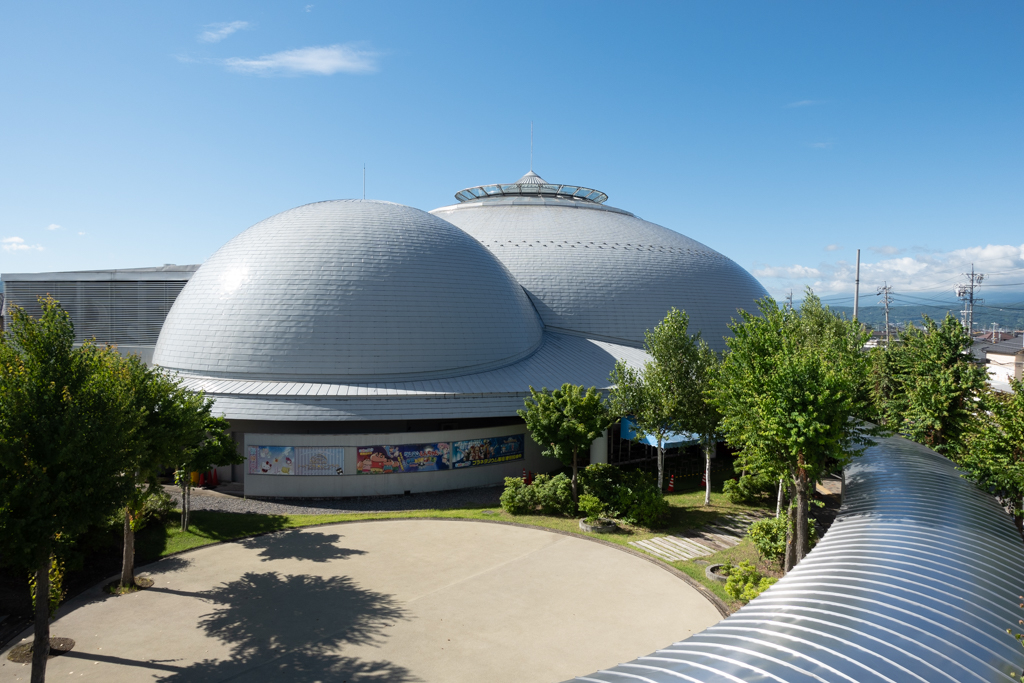
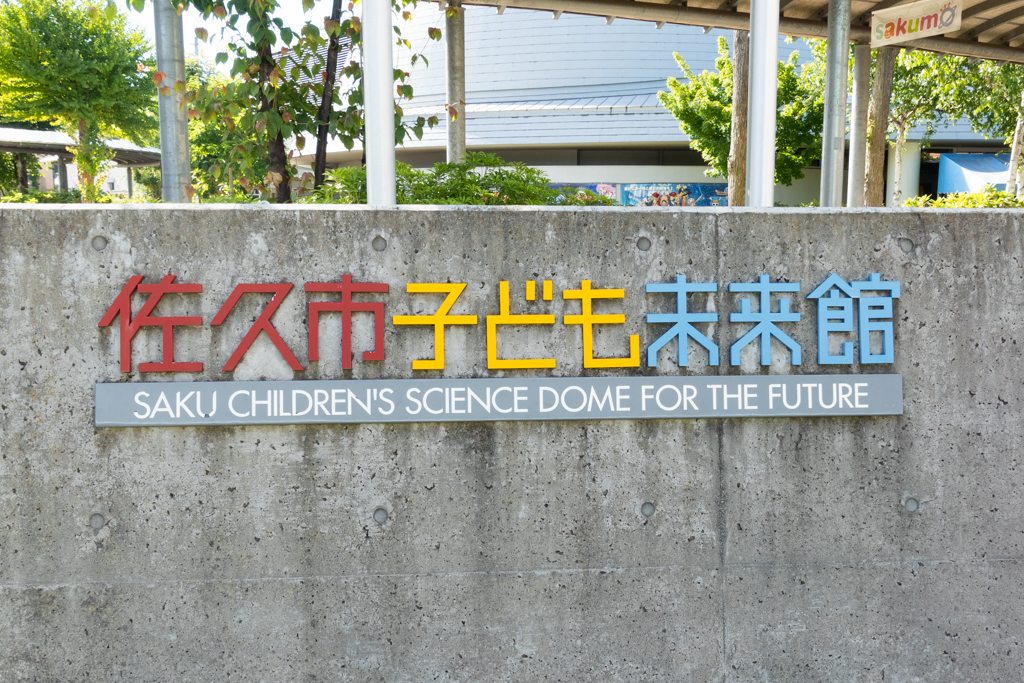
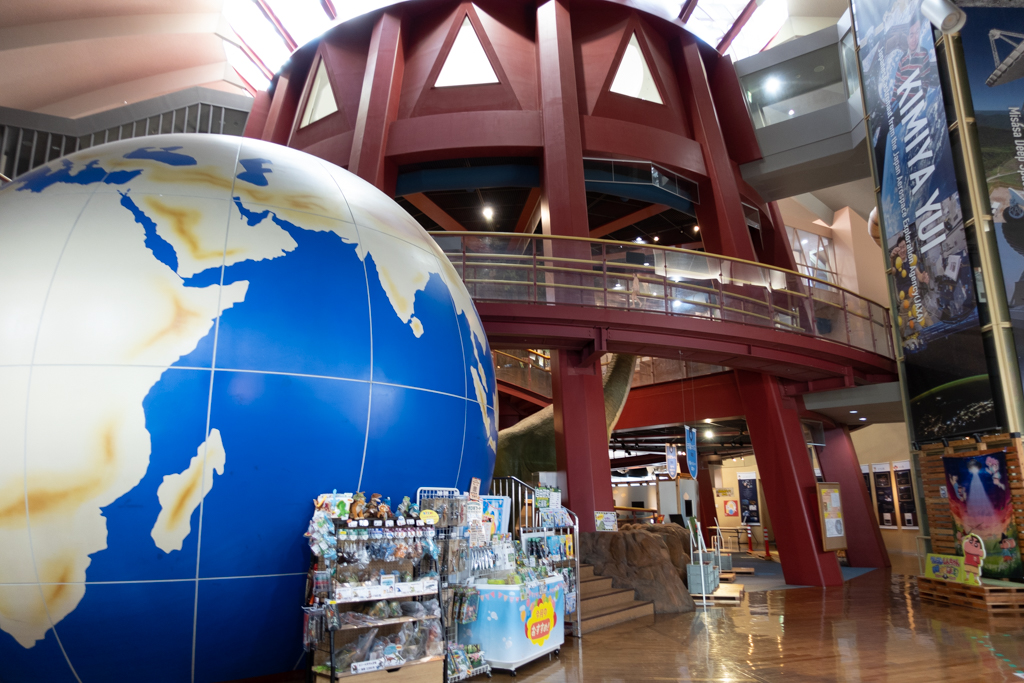
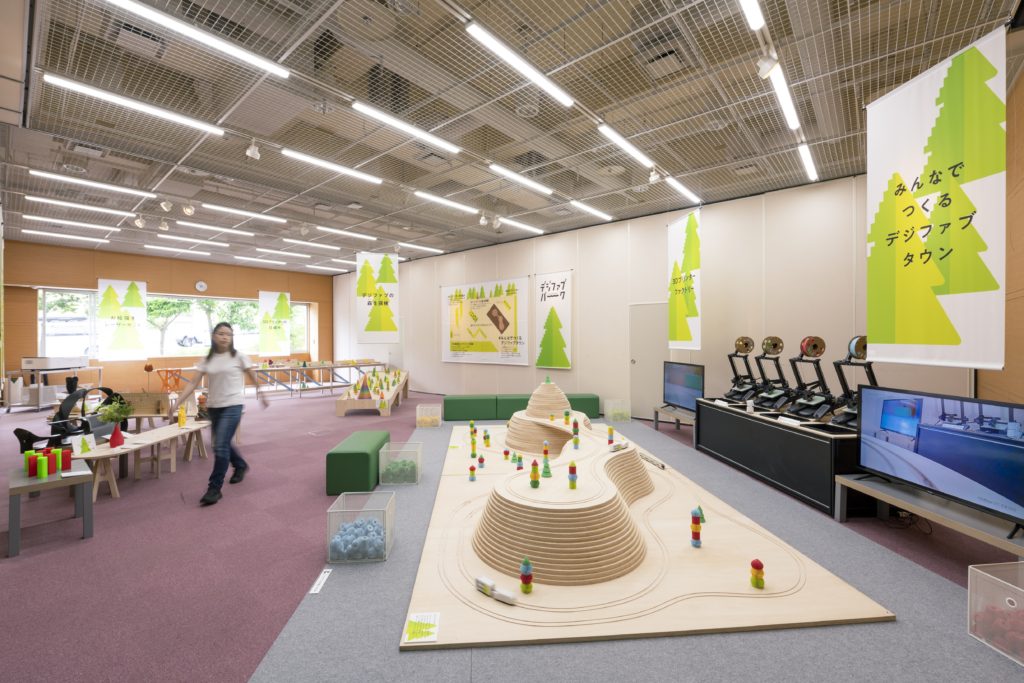
Both children and adults can learn about digital fabrication equipment and technology while playing around inside the park. The exhibition includes playground made from digital fabrication that can be touched and played with, along side with experiencing laser cutter booth, and an exhibition area that introduces digital fabrication technology.
All equipments and fixtures used in the venue are originally made using digital fabrication equipment.
[1] DIGI FAB TOWN
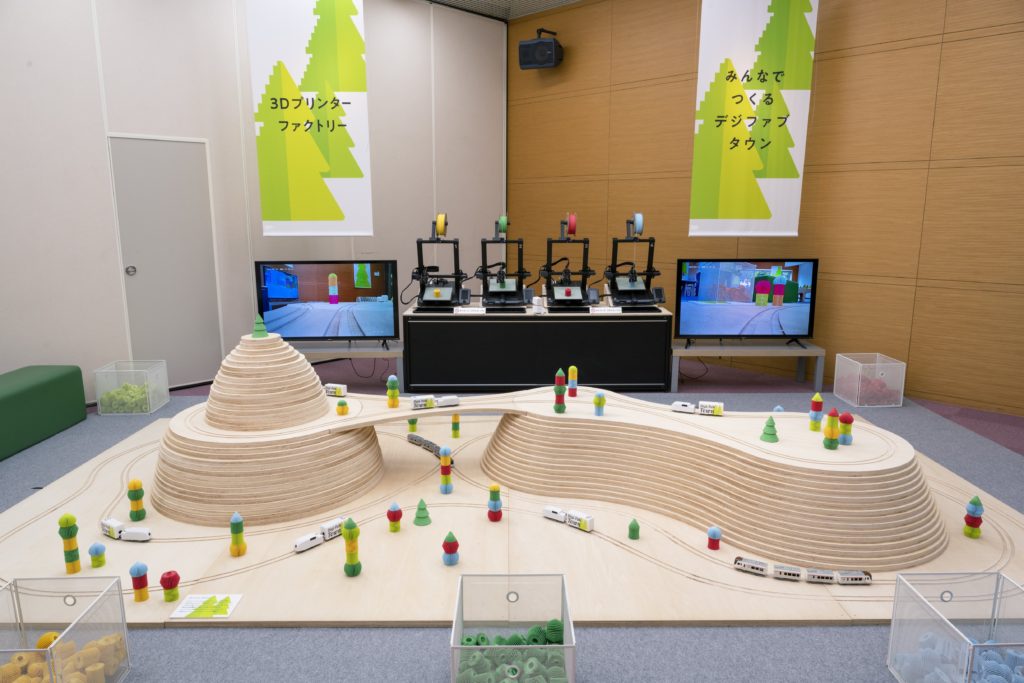
As soon as you step-in, the scene of wooden mountains spreads on your sight. The whole scenery is made by combining plywood parts cut out with ShopBot. This is an area where visitors can freely stack 3D printed blocks to create their own town.
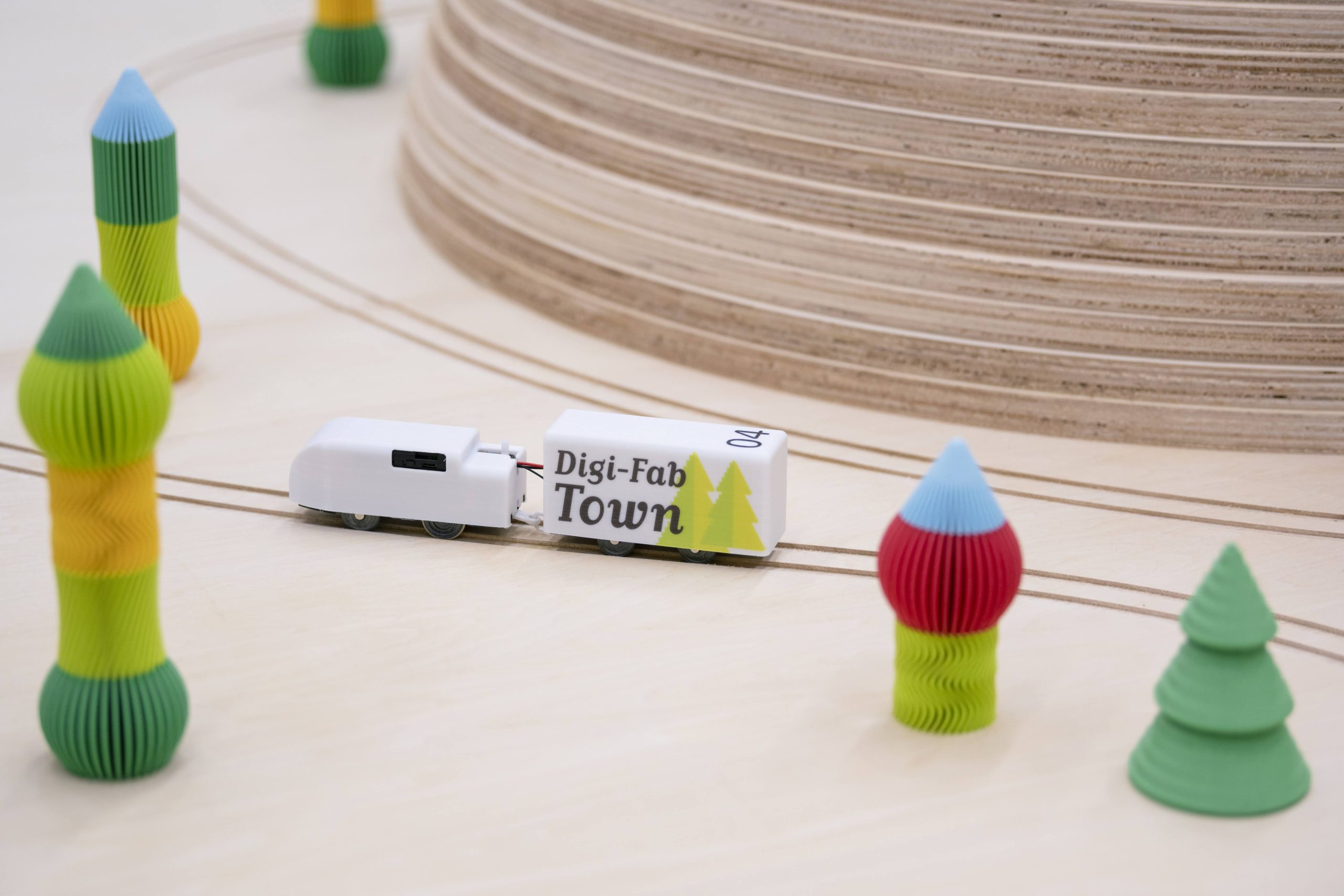
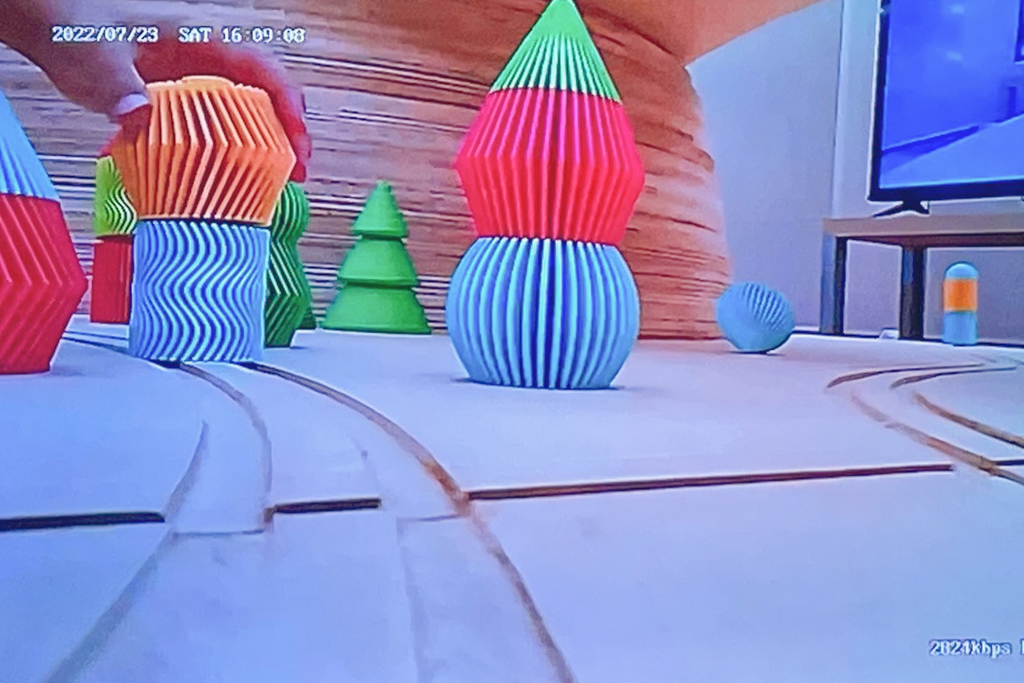
Two trains are running through the town, weaving their way between blocks and mountains. The first car has a built-in camera, and the view from the train is shown on a monitor behind the venue in real time.
Visitors can enjoy watching the ever-changing scenery of “Digi Fab Town” as they watch the buildings they have built and the people playing with 3D blocks.
This train itself is also originally made by a 3D printer and a UV printer.
[2] 3D PRINTER FACTORY
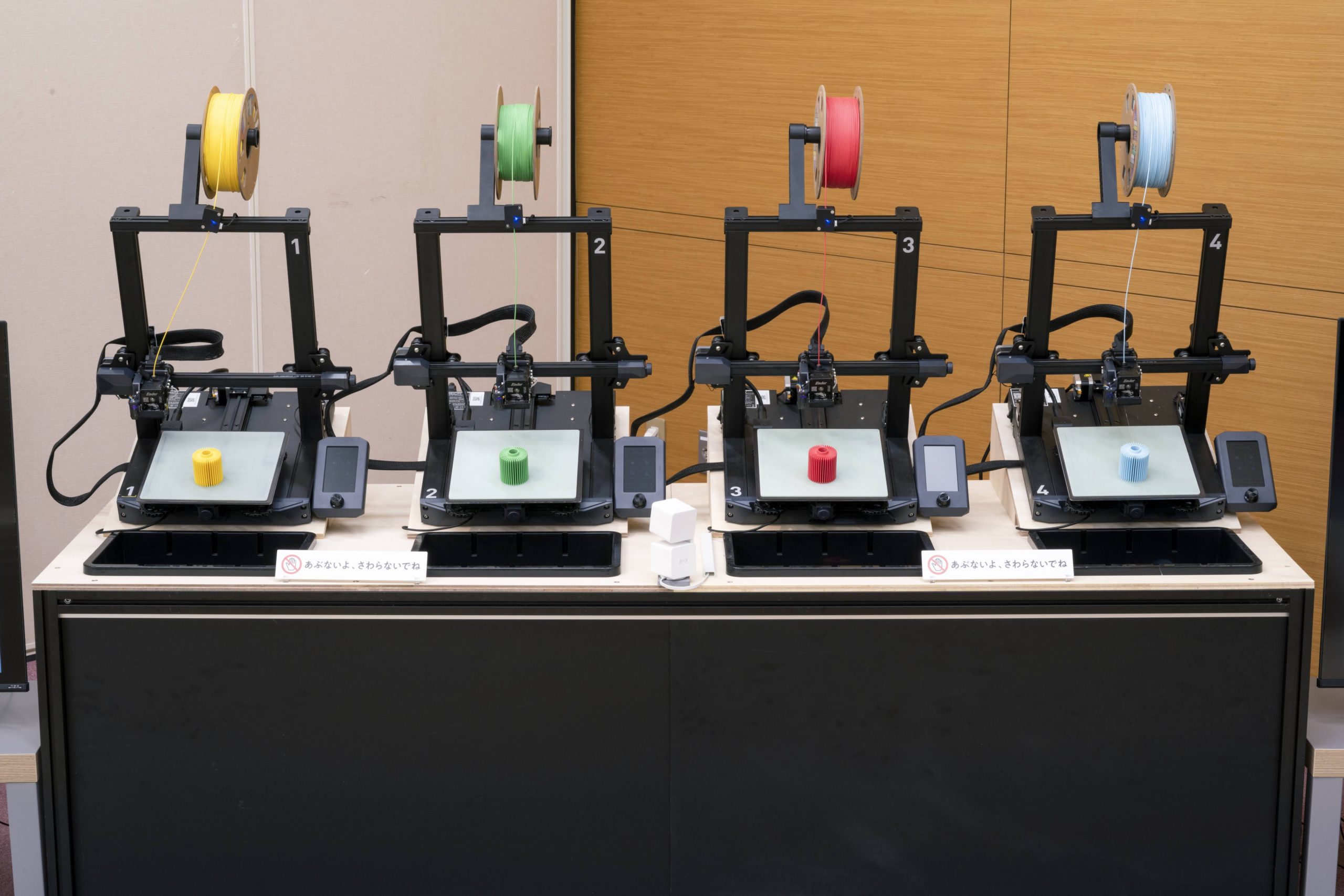
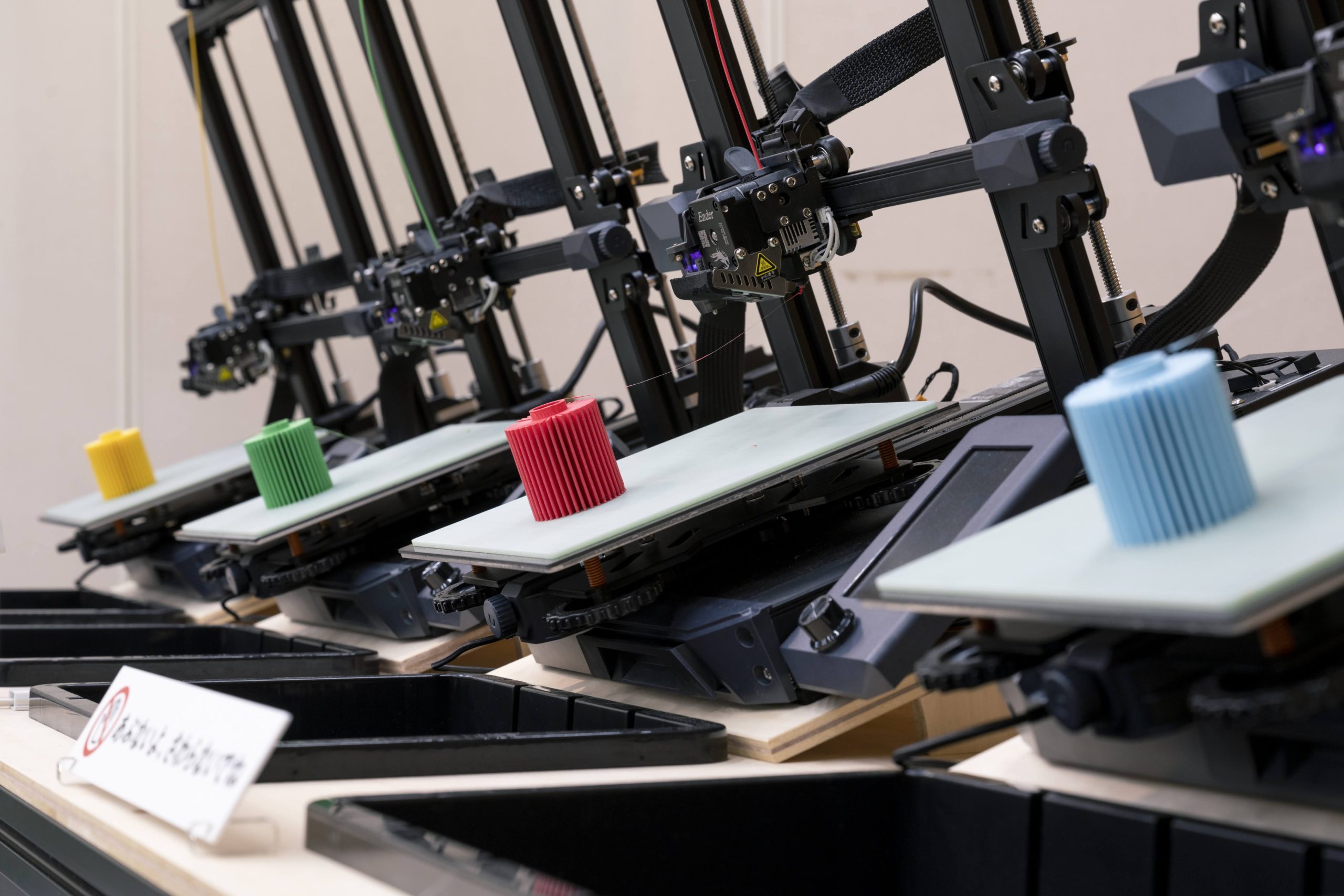
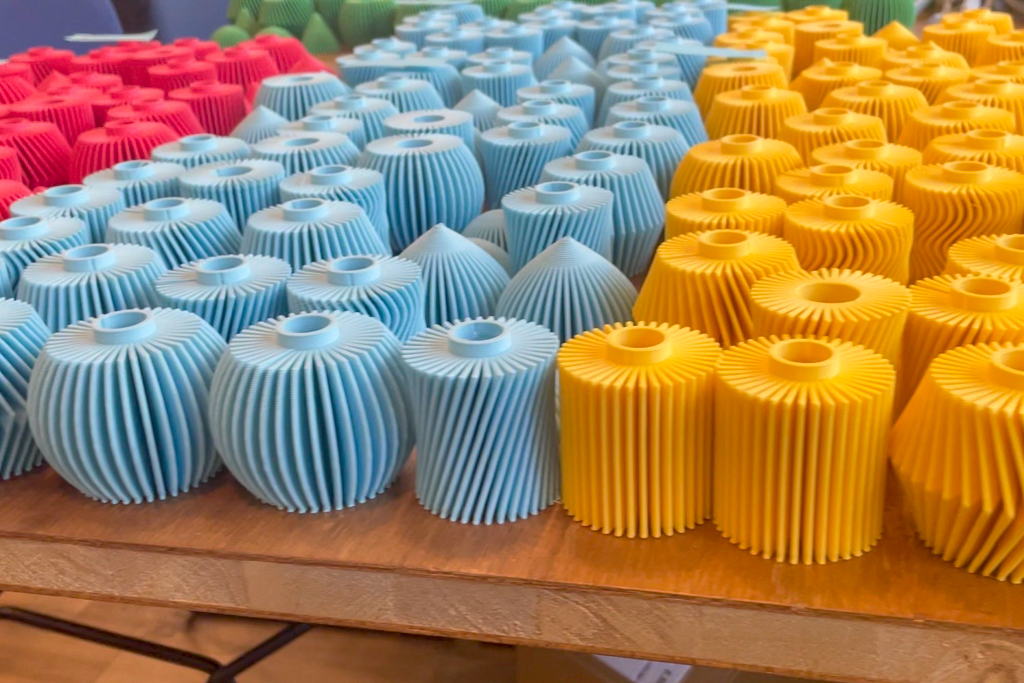
Four 3D printers aligned, so called “3D Printer Factory” is located behind the “Digi Fab Town”. They are continuously in operation during the exhibition, allowing visitors to observe and learn how each blocks are made which they are currently playing with.
This 3D printer is not operated on-site, but is controlled remotely from FabLab Kanda Nishikicho office in Tokyo. We manage the operation of each 3D printer on web server, with checking the printing status with a camera for safe and secure remote 3D printing.
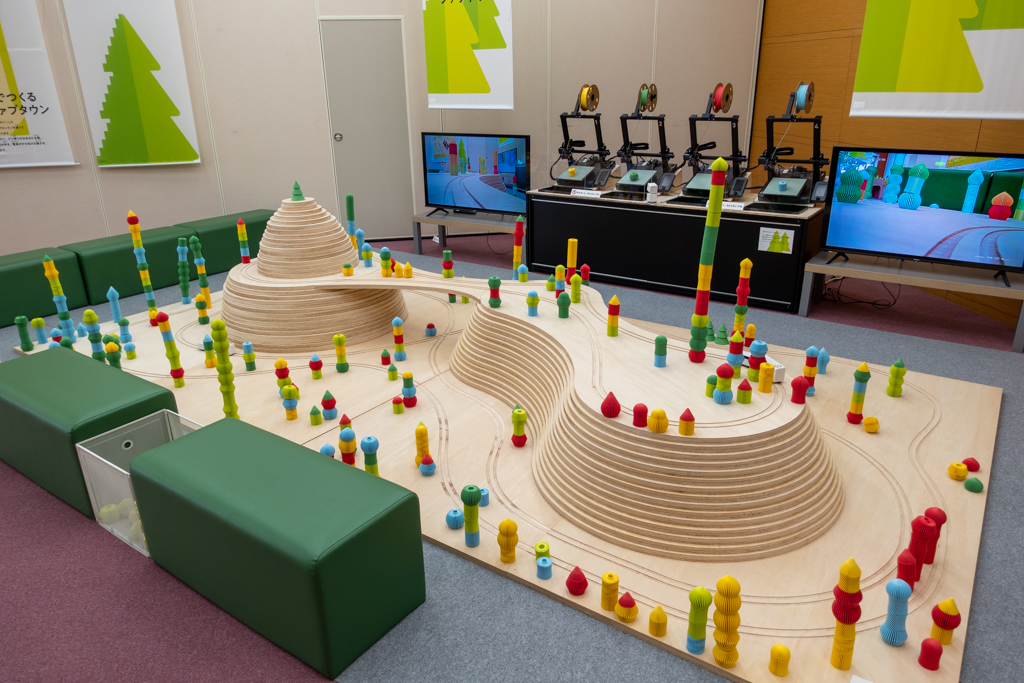

Picture above is a scene from the first day of the exhibition.
It was impressive to see the children freely enjoying themselves by inventing how to play by their own. Some children were challenging to stack blocks as high as possible, while others were building bridges for train paths. The playground went “Creating Town Together” just as we mentioned.
We are looking forward to see how this “Digi Fab Town” will develop during the exhibition period.
[3] Adventure in Digi Fab Forest


Players will roll a ball through the forest and aim the last huge tree. Every trees are created from digital fabrication equipment.
Large 3D-printed rainbow-colored tree located at the end of adventure, will make a cute sound of bells when the ball is successfully hit.
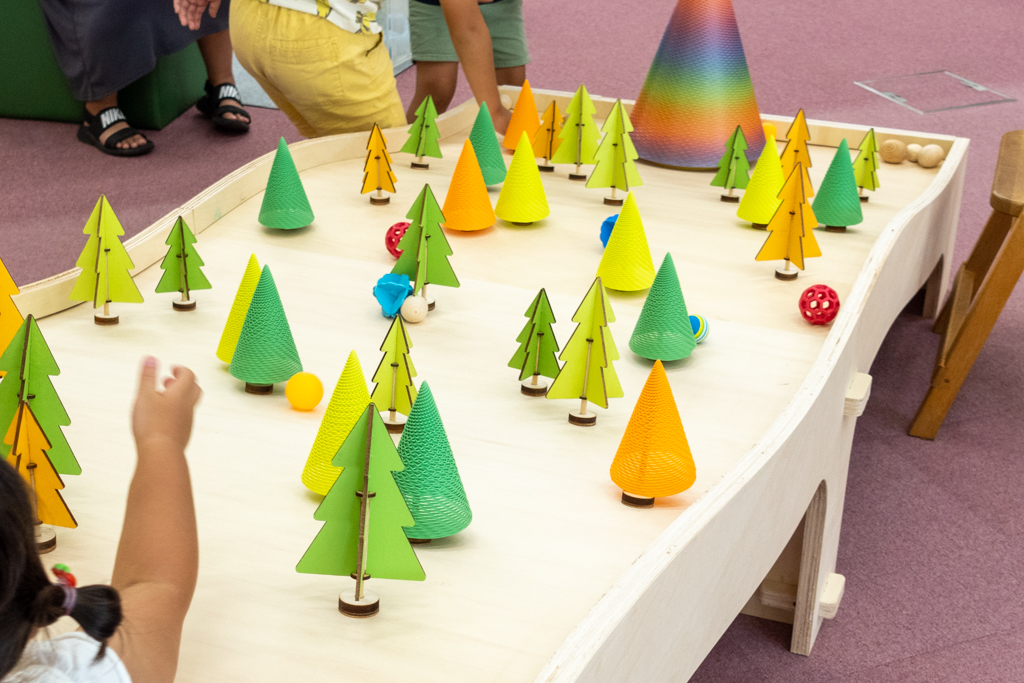
Trees that serve as obstacles were made with laser cutter and 3D printer. When the ball hits tree, some will spins around with its wings, and others will sways and shakes, allowing visitors to enjoy two types of movement.
The balls are made of different materials such as wood, rubber, sponges, etc. and has different shapes such as round, egg-shaped, and snarled. Players can learn the difference of physical characteristics while playing. The weight of the ball also makes change how it moves when it hit trees and how loud the bell will sound at the goal.
This fixture was also made with a ShopBotTools.
[4] How 3D printers work

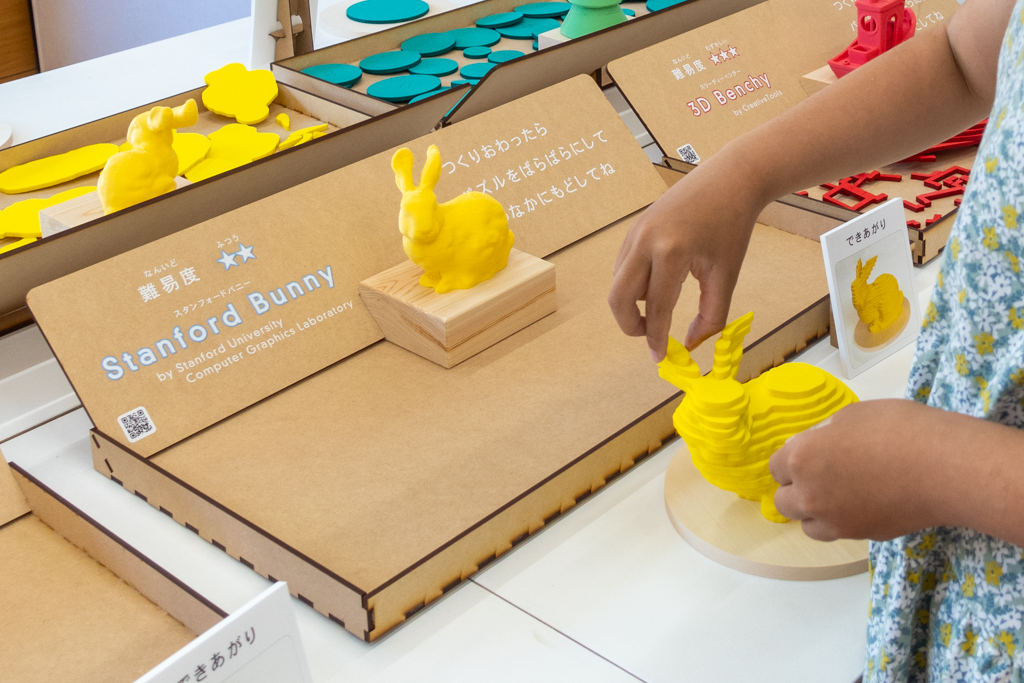
These puzzles were made by slicing a 3D model.
When you stack each pieces in correct order, it will be the same three-dimensional shape as the 3D printed sample shown front. This puzzle is made out of laser cut EVA foam board, and plans were generated from “Slicer for Fusion360” software.
There are four types of puzzles, ranging from beginner puzzles to more advanced models that require careful stacking of small parts to complete the puzzle. Players can learn how 3D printer works while playing with this puzzle.
[5] Laser Cutter Experience
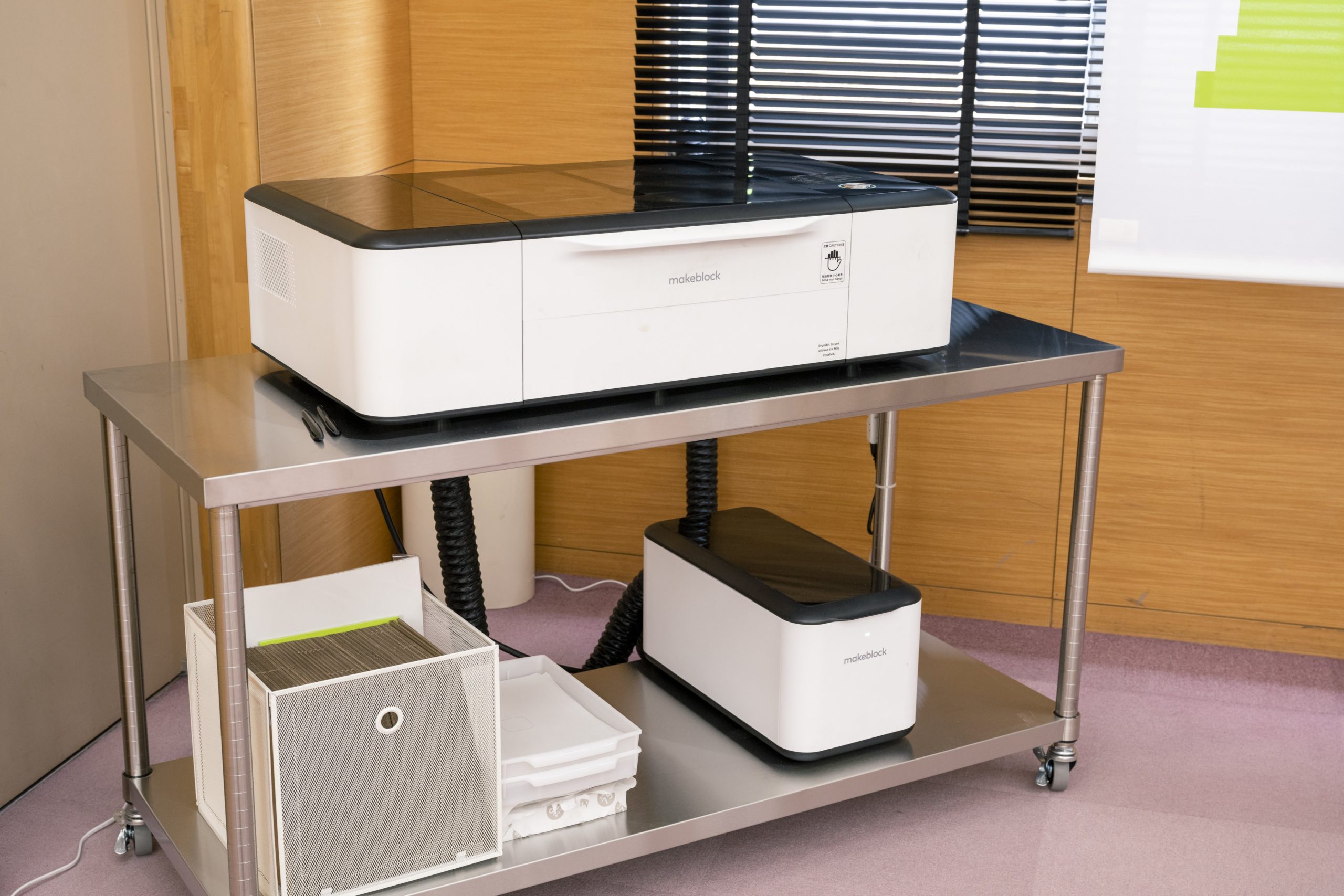
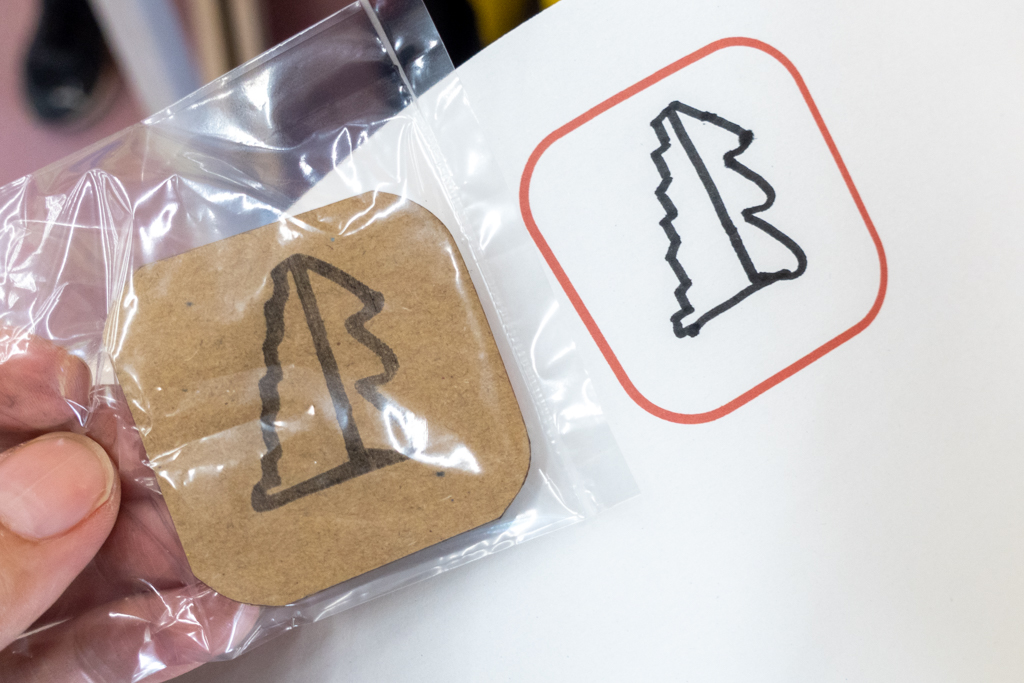
“Laserbox Pro” from makeblock is installed for hands-on workshop.
“Laserbox Pro” has a function called “scan cut”, where the built-in camera detects the color of illustration placed inside of the machine, and define where to cut and engrave. Using this scan-cut function, you can create cardboard copy from your original drawing.
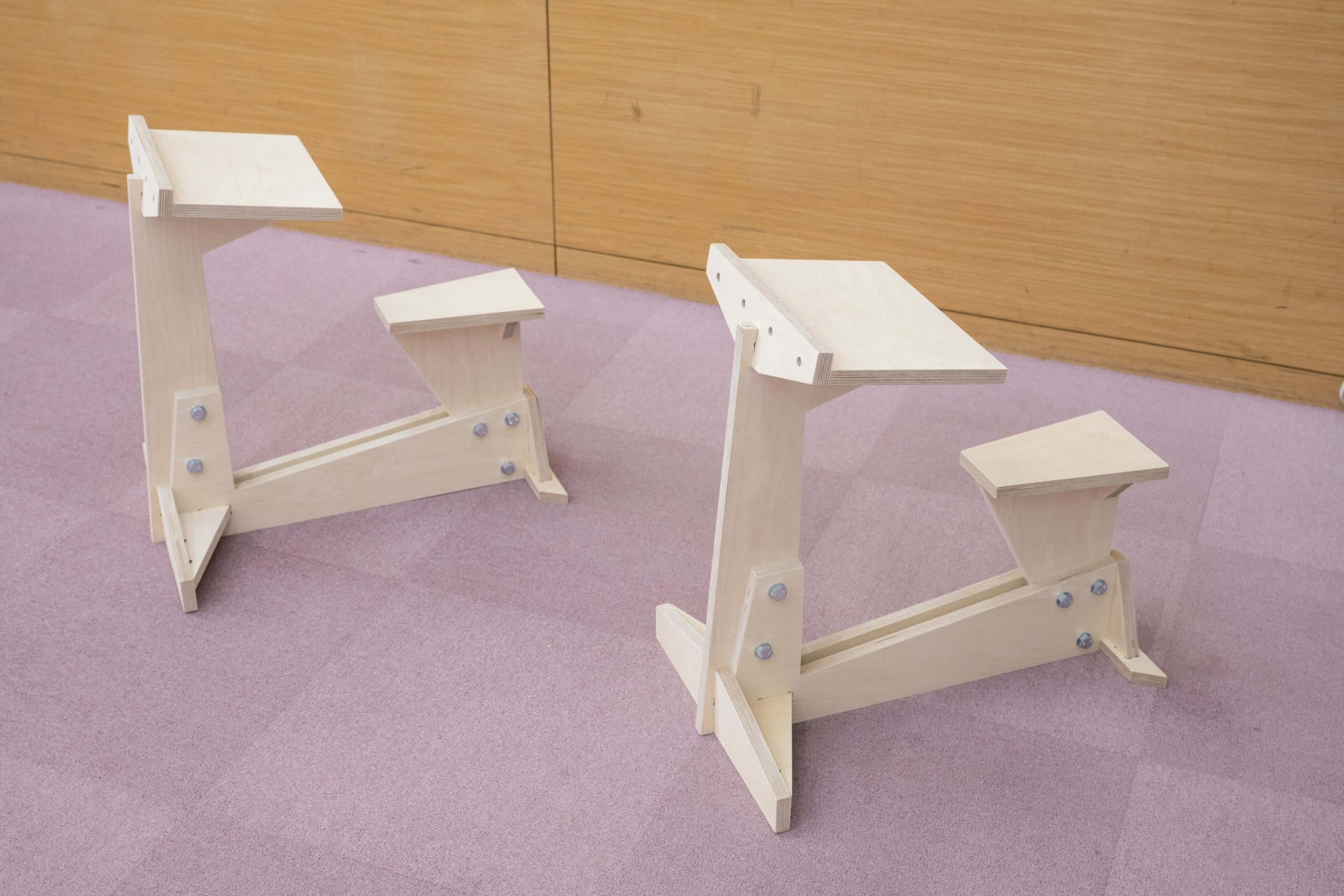
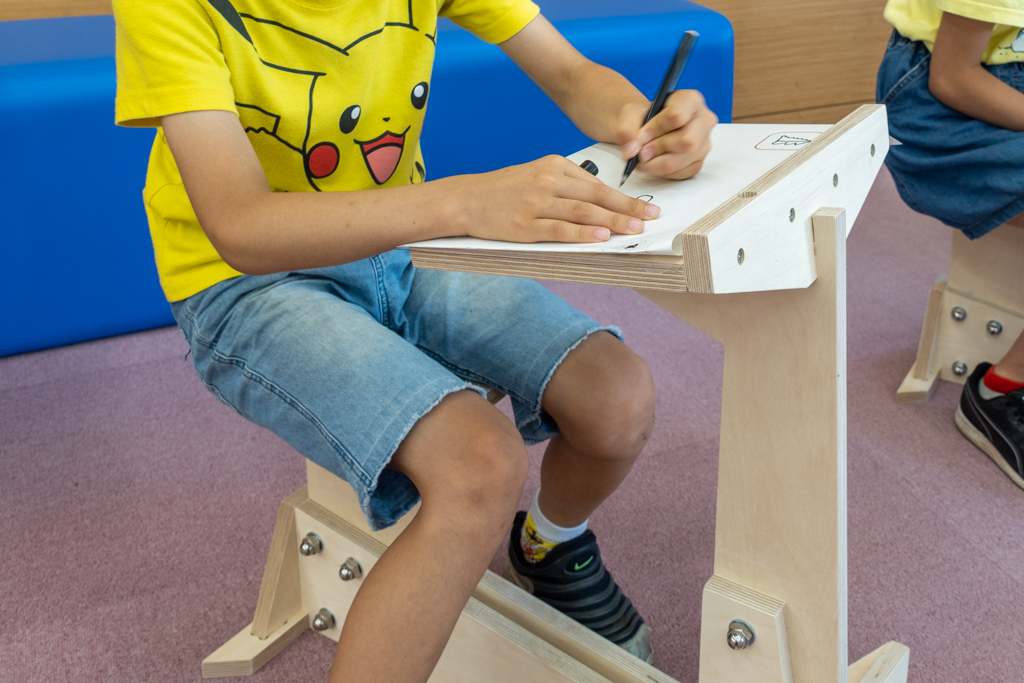
These drawing desks were also made with ShopBot. We used leftover plywoods from other fixtures for this desk.
[6] Exhibition : What is Digital Fabrication?
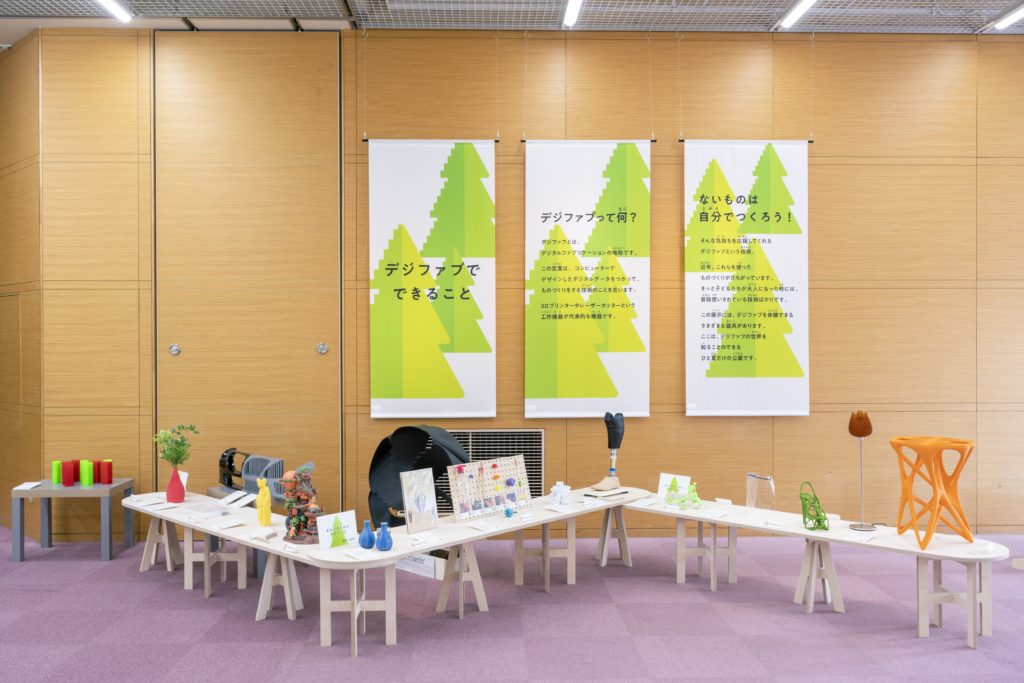
We prepared various types of examples related to digital fabrication.
Examples are varied from works by hobbyists to professionals, from prototyping to end products, from commodities to art pieces. We aimed introduce how these technologies are used in our daily lives.
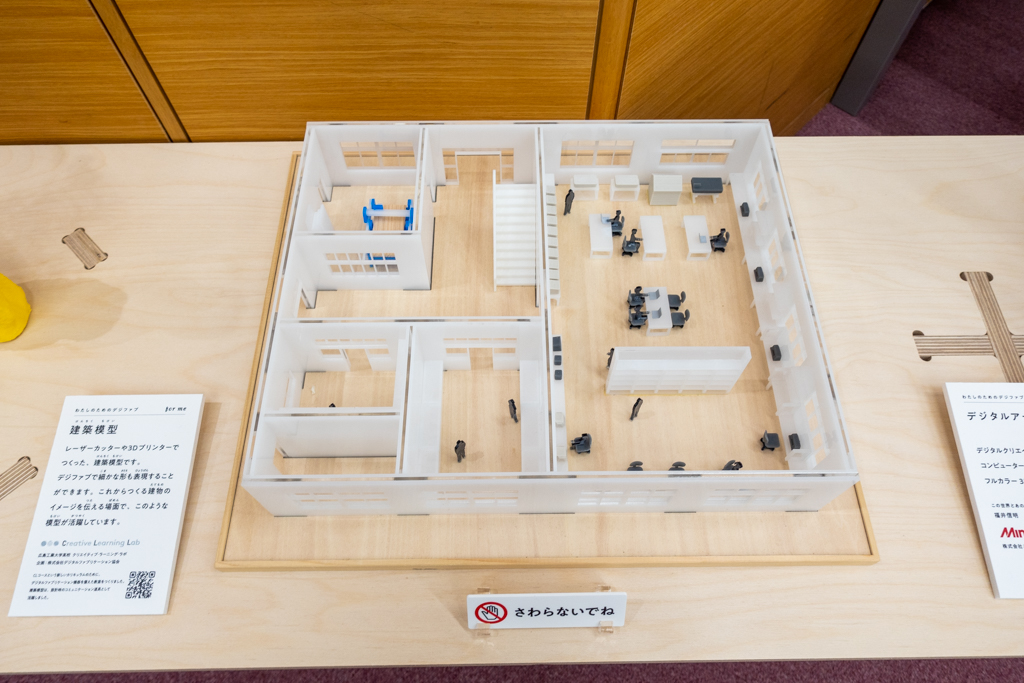
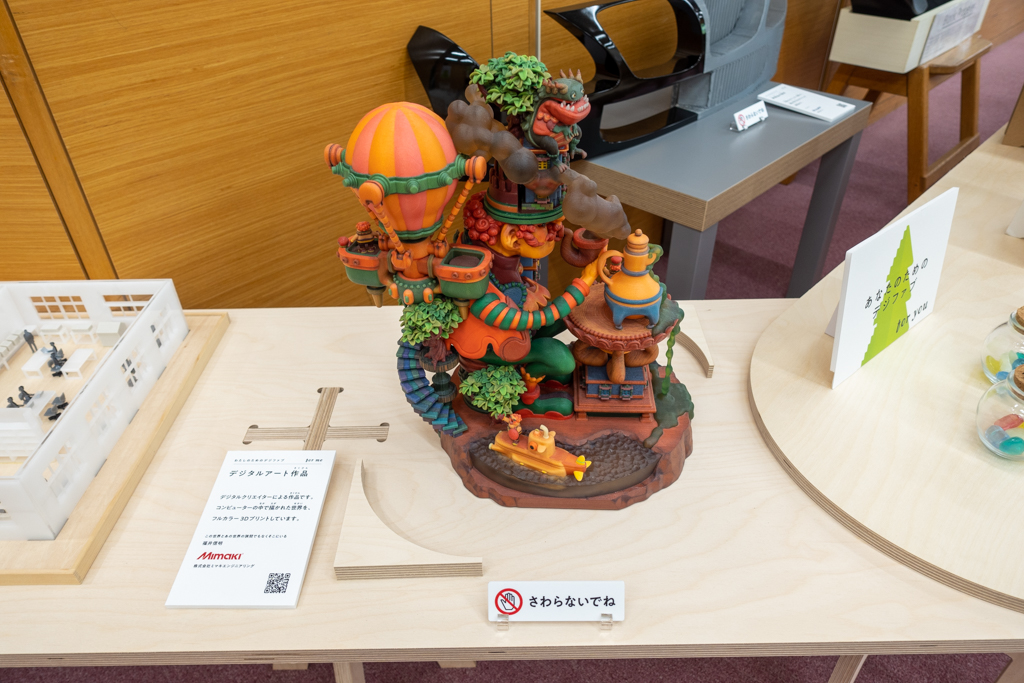
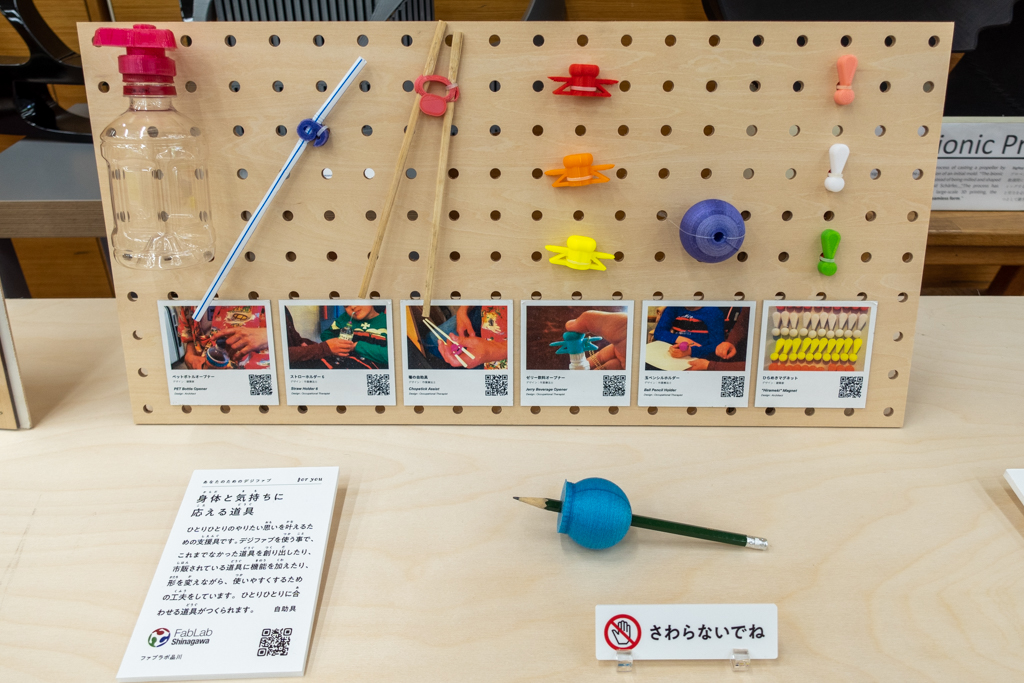
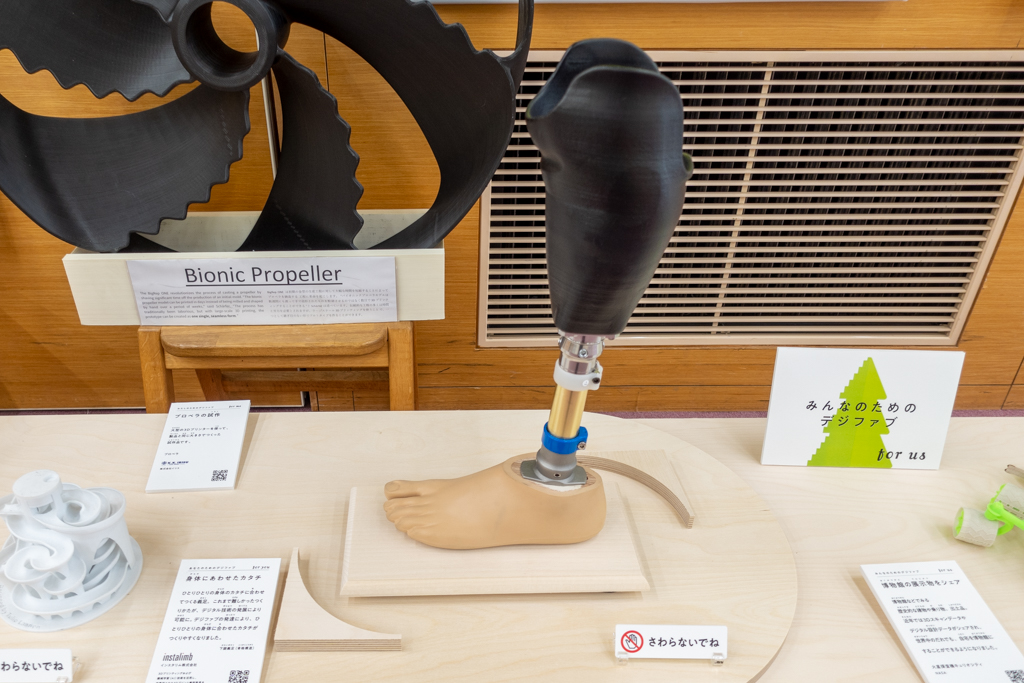
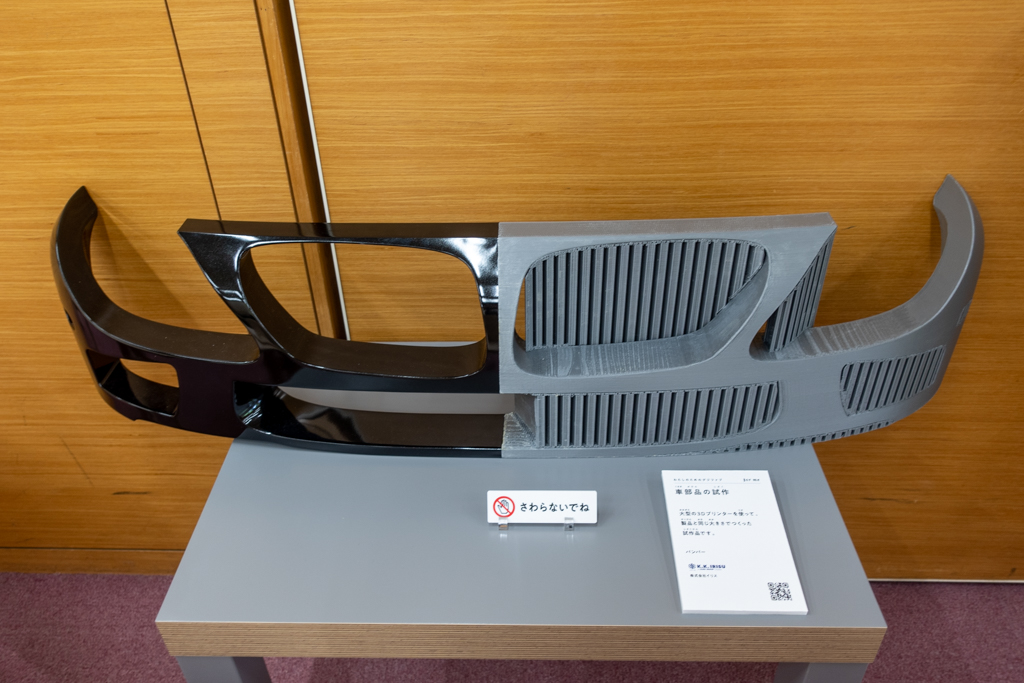
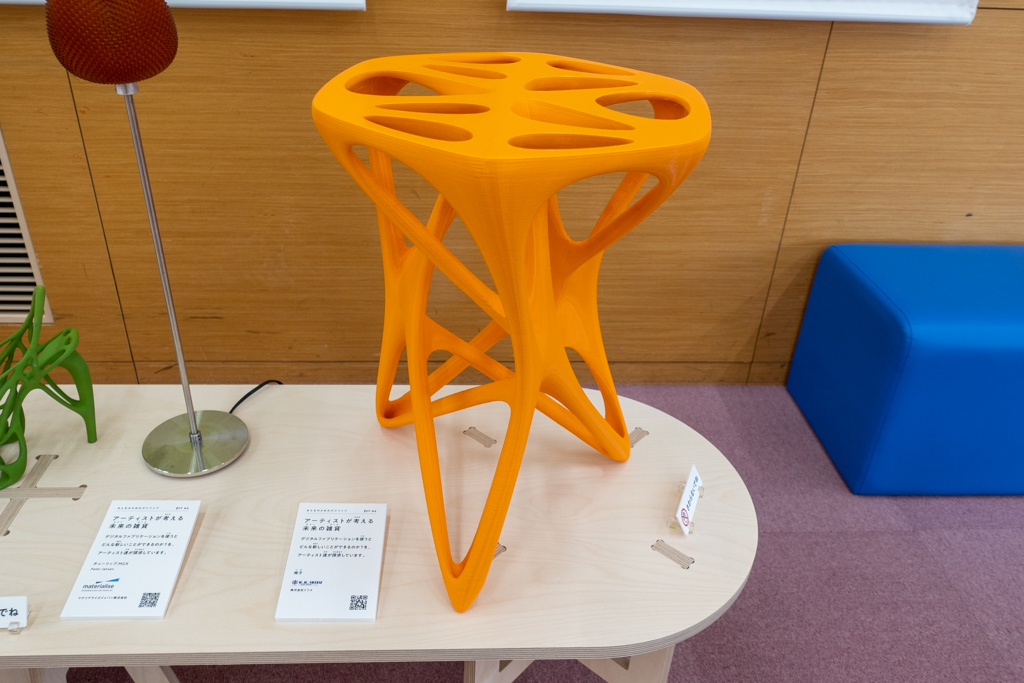
Summary
While planning this exhibition, we had massive cooperation from other fab labs and related companies in Japan. We believe this exhibition became a great opportunity to introduce digital fabrication to a wide audience, especially to youth ages.
We will continue to support the environment for children where they can freely use digital fabrication.
DIGIFAB PARK
Period: July 23 (Sat) to September 4 (Sun), 2022
Venue: Saku City Children’s Museum of the Future (Nagano, Japan)
Planning and Production
FabLab KandaNishikicho | Digital Fabrication Association
Design
NDC Graphics Inc.
Action Resource Development
Cooperation
FabLab Minatomirai [Kanagawa University]
FabLab Shinagawa
Iris Inc.
Instalim Inc.
Materialize Japan Inc.
Mimaki Engineering Inc.
Production Cooperation
FabLab Minatomirai [Kanagawa University]
@Aldebaran_faber


